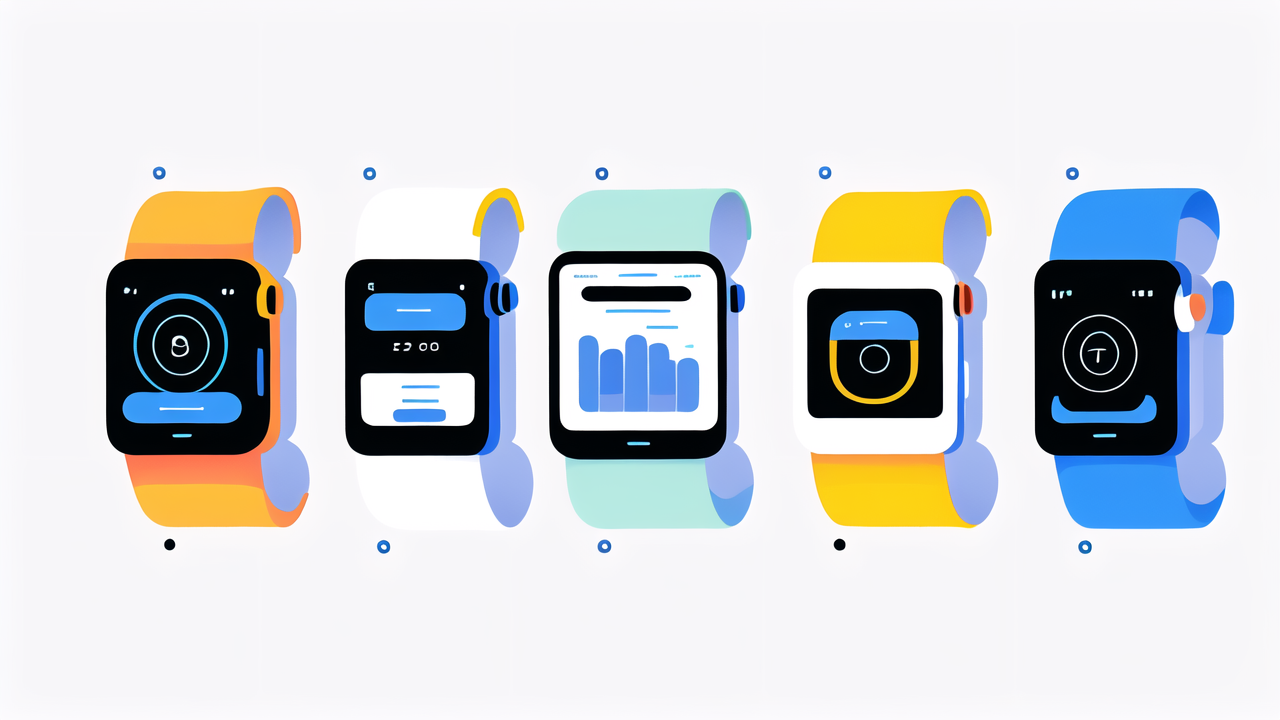The Evolution of Wearable Technology in the United States
The history of smart bracelets and their transformation
Smart bracelets have come a long way since their inception. They started as simple step counters in the early 2000s. These devices were bulky and had limited functions. As technology advanced, they became sleeker and more powerful.

By 2010, smart bracelets could track sleep patterns and heart rate. This was a game-changer for fitness enthusiasts. The devices became more popular as people saw their health benefits.
Today's smart bracelets are mini-computers on your wrist. They can:
- Monitor vital signs
- Track workouts
- Display notifications
- Make payments
- Control smart home devices
The transformation has been remarkable. Smart bracelets now blend seamlessly into our daily lives.
Key advancements in wearable sensor technology
Wearable sensor technology has seen rapid growth in recent years. These advancements have made smart bracelets more useful and accurate. Some key improvements include:
- Smaller sensors: This allows for more comfortable, less obtrusive devices.
- Improved battery life: Smart bracelets can now last for days or even weeks on a single charge.
- Better data accuracy: Advanced sensors provide more reliable health and fitness data.
- Waterproof designs: Many smart bracelets can now be worn while swimming or showering.
- Integrated GPS: This feature allows for more precise location tracking during outdoor activities.
These advancements have expanded the capabilities of smart bracelets. They've become essential tools for health monitoring and fitness tracking.
Regulatory impacts on the US wearable tech industry
The US wearable tech industry faces various regulatory challenges. These rules aim to protect consumers and ensure product safety. Key regulatory impacts include:
- FDA oversight: Some smart bracelets are classified as medical devices. This means they need FDA approval.
- Data privacy laws: Companies must protect user data under laws like HIPAA and CCPA.
- Consumer protection: The FTC ensures companies don't make false claims about their products.
- Safety standards: Devices must meet certain safety criteria, especially for batteries.
These regulations have shaped the industry. They've led to safer, more reliable products. However, they also present challenges for innovation and market entry.
Impact of Smart Bracelets on Fashion and Lifestyle
Blending fashion with functionality: The smart bracelet boom
Smart bracelets have transformed from pure tech gadgets to fashion accessories. Designers now create stylish options to suit various tastes. This blend of fashion and function has led to a boom in the market.

Many brands offer customizable bands and faces. Users can match their smart bracelet to their outfit or mood. Some high-end fashion houses have even entered the market. They offer luxury smart bracelets that double as jewelry.
This trend has made smart bracelets more appealing to a wider audience. It's no longer just about function. Style plays a big role in consumer choice. The result? A booming market with options for everyone.
Lifestyle enhancements: The diverse applications of smart bracelets
Smart bracelets have become integral to many people's daily lives. They offer a wide range of applications beyond just fitness tracking. Some key lifestyle enhancements include:
- Sleep monitoring: Users can track their sleep patterns and quality.
- Stress management: Some devices offer breathing exercises and stress level monitoring.
- Medication reminders: Helpful for those on regular medication schedules.
- Social connectivity: Users can receive notifications and messages on their wrist.
- Payment solutions: Many smart bracelets allow for contactless payments.
These diverse applications make smart bracelets valuable tools for overall well-being. They help users stay connected, healthy, and organized throughout their day.
Data-driven decision-making: How smart bracelets inform consumer choices
Smart bracelets have revolutionized how we make health and lifestyle decisions. They provide a wealth of data that can inform our choices. Here's how:
- Fitness goals: Users can track progress and adjust their workouts based on data.
- Sleep habits: Sleep data helps users optimize their rest and wake times.
- Stress management: Stress level data can prompt users to take breaks or practice mindfulness.
- Diet choices: Some smart bracelets integrate with nutrition apps for better meal planning.
- Time management: Activity tracking can help users better allocate their time.
This data-driven approach empowers consumers to make informed decisions. It's like having a personal health coach on your wrist. Smart bracelets have truly changed how we approach our daily lives.
Future Trends in Wearable Technology and Market Predictions
Innovations on the horizon: What's next for smart bracelets?
The future of smart bracelets looks exciting. Many innovations are in development. Here are some trends we might see:

- Advanced health monitoring: Devices may detect early signs of diseases like diabetes or heart issues.
- Emotion recognition: Some bracelets might be able to detect and respond to the wearer's emotions.
- Augmented reality integration: Smart bracelets could work with AR glasses for immersive experiences.
- Energy harvesting: Future devices might charge themselves using body heat or movement.
- AI-powered personal assistants: Smarter, more intuitive interactions with our devices.
These innovations could make smart bracelets even more integral to our daily lives. They promise to further blur the line between technology and human experience.
Market segmentation and consumer projections for the US smart bracelet industry
The US smart bracelet market is evolving rapidly. It's becoming more segmented as it matures. Here are some key trends:
- Health-focused segment: Growing demand for medical-grade devices.
- Fashion-forward segment: Increasing interest in stylish, customizable options.
- Budget segment: Rise of affordable smart bracelets with basic features.
- Luxury segment: High-end smart bracelets from premium brands.
Consumer projections show continued growth. More people are adopting smart bracelets for health and convenience. The market is expected to expand as devices become more affordable and feature-rich.
Potential challenges and opportunities in the wearable technology space
The wearable technology space faces both challenges and opportunities. Here are some key points:
Challenges:
- Data privacy concerns: Ensuring user data remains secure and private.
- Battery life limitations: Improving battery technology for longer-lasting devices.
- Accuracy of sensors: Enhancing the reliability of health and fitness data.
- Market saturation: Standing out in an increasingly crowded market.
Opportunities:
- Integration with IoT: Smart bracelets could become central to smart home ecosystems.
- Personalized healthcare: Potential for early disease detection and prevention.
- Workplace applications: Use in employee wellness programs and productivity tracking.
- Expansion into new demographics: Targeting older adults or children with specialized devices.
Navigating these challenges and opportunities will shape the future of wearable technology. The industry must innovate while addressing user concerns to continue its growth trajectory.




Leave a comment
This site is protected by hCaptcha and the hCaptcha Privacy Policy and Terms of Service apply.